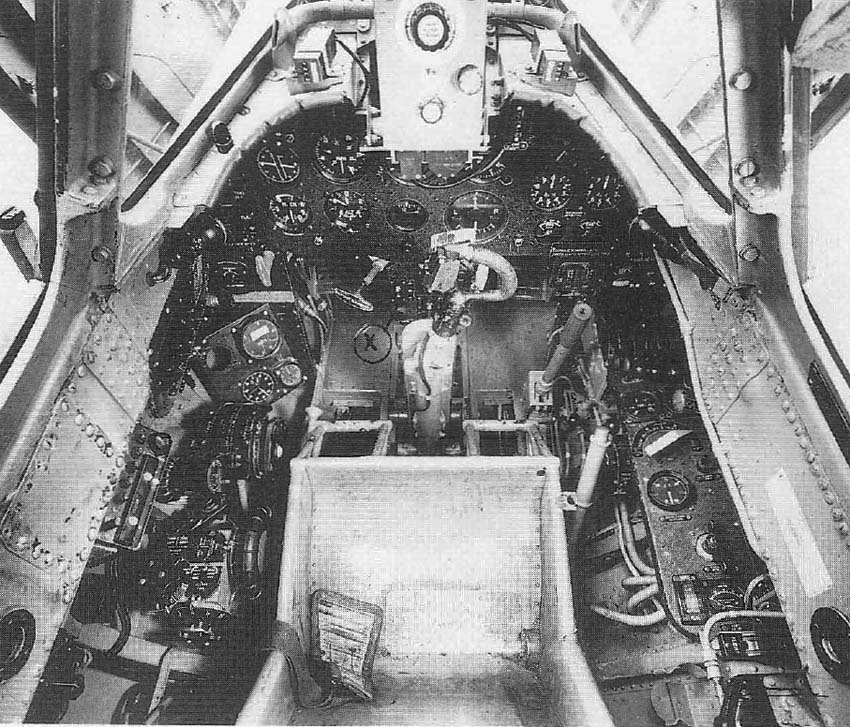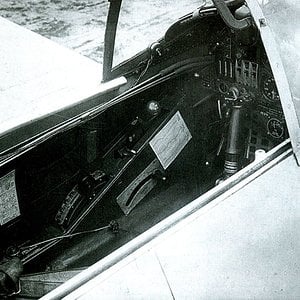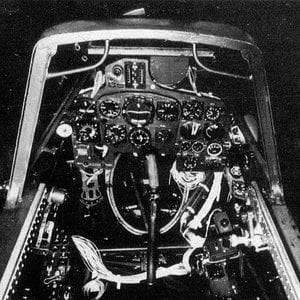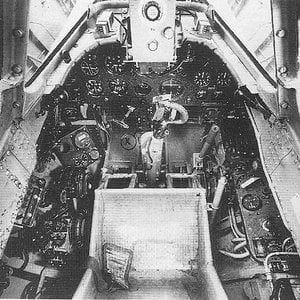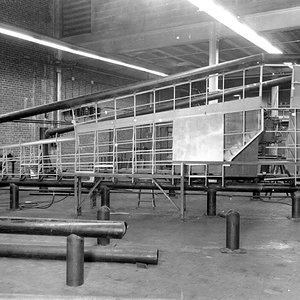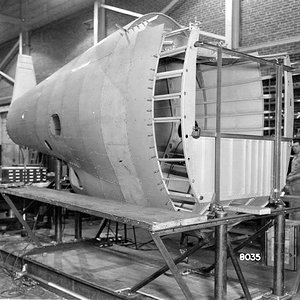Navigation
Install the app
How to install the app on iOS
Follow along with the video below to see how to install our site as a web app on your home screen.
Note: This feature may not be available in some browsers.
More options
You are using an out of date browser. It may not display this or other websites correctly.
You should upgrade or use an alternative browser.
You should upgrade or use an alternative browser.
Design and development
The SR./A.1 was directly inspired by the (modest) successes experienced by the Imperial Japanese Navy with seaplane fighters such as the Nakajima A6M2-N (an adaptation of the Mitsubishi Zero) and the Kawanishi N1K. In theory, seaplanes were ideally suited to conditions in the Pacific theatre, and could turn any relatively calm area of coast into an airbase. Their main disadvantage came from the way in which the bulk of their floatation gear penalised their performance compared to other fighters.
Saunders-Roe realised that the new turbojet engine presented an opportunity to overcome this drawback. Not requiring clearance for a propeller, the fuselage could sit lower in the water and utilise a flying boat-type hull. The company first presented their idea - SR.44 -to the Air Ministry in mid-1943. Performance with Halford H.1 engines was estimated at 520 mph at 40,000 ft. Criticism of the design included the wing thickness/chord ratio which was considered by the Ministry to be too high for a high-speed fighter operating at altitude.[1] The design was modified and specification E.6/44 was raised in April 1944 on the modified design[ with an accompanying development contract for three prototypes in May 1944.
With the end of the war and Saunders-Roe concentrating its efforts on their Saunders-Roe Princess very large long range civilian flying boat project, construction slipped behind.
The first prototype, piloted by Geoffrey Tyson, flew on 16 July 1947,[4] and while it and its two sisters proved to have good performance and handling - Tyson made a demonstration of aerobatics and inverted flight at the 1948 SBAC Display the need for such aircraft had completely evaporated with the end of the war. Furthermore, the success of the aircraft carrier in the Pacific had demonstrated a far more effective way to project airpower over the oceans though Saunders-Roe argued that carriers and their escorts were still very vulnerable to aircraft or other vessels.[6] In addition, the cockpit canopy was small and heavily framed, giving the pilot a poor view outside the aircraft. An automatic mooring system was incorporated so the pilot could moor the aircraft without external aid or leaving the cockpit. A fundamental problem was that production of the Beryl engine had ceased when Metropolitan-Vickers had withdrawn from jet engine development, and only a limited number of engines were available. The project was suspended and the prototype put into store in 1950, but was briefly resurrected in November 1950 owing to the outbreak of the Korean War, before realisation of its obsolescence compared with land-based fighters and an inability to solve the engine problem forced a final cancellation, the prototype last flying in June 1951. Saunders-Roe came up with a design with skis which Flight called the "Saunders Roe Hydroski" to improve the performance closer to land-based aircraft but "received no official support".
Although the aircraft never received an official name, it was referred to by company workers as 'Squirt'.
The two SR./A.1 prototypes were fitted with the first two production Martin-Baker ejection seats built
The SR./A.1 was directly inspired by the (modest) successes experienced by the Imperial Japanese Navy with seaplane fighters such as the Nakajima A6M2-N (an adaptation of the Mitsubishi Zero) and the Kawanishi N1K. In theory, seaplanes were ideally suited to conditions in the Pacific theatre, and could turn any relatively calm area of coast into an airbase. Their main disadvantage came from the way in which the bulk of their floatation gear penalised their performance compared to other fighters.
Saunders-Roe realised that the new turbojet engine presented an opportunity to overcome this drawback. Not requiring clearance for a propeller, the fuselage could sit lower in the water and utilise a flying boat-type hull. The company first presented their idea - SR.44 -to the Air Ministry in mid-1943. Performance with Halford H.1 engines was estimated at 520 mph at 40,000 ft. Criticism of the design included the wing thickness/chord ratio which was considered by the Ministry to be too high for a high-speed fighter operating at altitude.[1] The design was modified and specification E.6/44 was raised in April 1944 on the modified design[ with an accompanying development contract for three prototypes in May 1944.
With the end of the war and Saunders-Roe concentrating its efforts on their Saunders-Roe Princess very large long range civilian flying boat project, construction slipped behind.
The first prototype, piloted by Geoffrey Tyson, flew on 16 July 1947,[4] and while it and its two sisters proved to have good performance and handling - Tyson made a demonstration of aerobatics and inverted flight at the 1948 SBAC Display the need for such aircraft had completely evaporated with the end of the war. Furthermore, the success of the aircraft carrier in the Pacific had demonstrated a far more effective way to project airpower over the oceans though Saunders-Roe argued that carriers and their escorts were still very vulnerable to aircraft or other vessels.[6] In addition, the cockpit canopy was small and heavily framed, giving the pilot a poor view outside the aircraft. An automatic mooring system was incorporated so the pilot could moor the aircraft without external aid or leaving the cockpit. A fundamental problem was that production of the Beryl engine had ceased when Metropolitan-Vickers had withdrawn from jet engine development, and only a limited number of engines were available. The project was suspended and the prototype put into store in 1950, but was briefly resurrected in November 1950 owing to the outbreak of the Korean War, before realisation of its obsolescence compared with land-based fighters and an inability to solve the engine problem forced a final cancellation, the prototype last flying in June 1951. Saunders-Roe came up with a design with skis which Flight called the "Saunders Roe Hydroski" to improve the performance closer to land-based aircraft but "received no official support".
Although the aircraft never received an official name, it was referred to by company workers as 'Squirt'.
The two SR./A.1 prototypes were fitted with the first two production Martin-Baker ejection seats built

